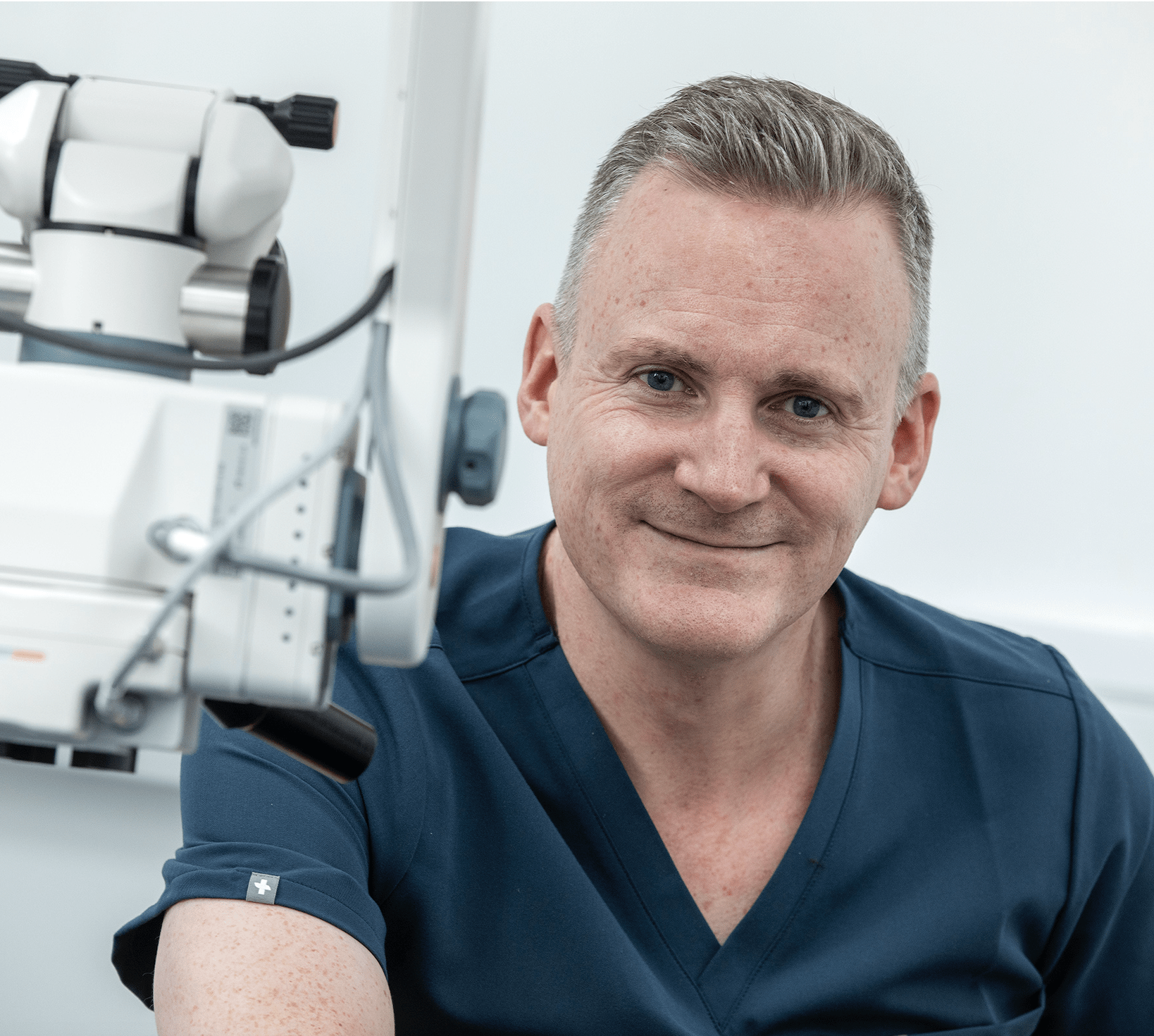April 2025 – Ulster Tatler
Ulster Tatler speaks to Solasta’s Lead Medical Director, Mr Michael O’Gallagher, one of the region’s most respected anterior segment surgeons.
You can find the article online on https://issuu.com/ulstertatler/docs/april_tatler_2025_reduced_ page 60-61
You studied medicine at Queen’s University, at what point did you decide to specialise in ophthalmic medicine?
I discovered my passion for ophthalmology in my final year at Queen’s University during a specialist placement. I was captivated by the transformative impact of cataract surgery and the guidance from exceptional mentors, now esteemed colleagues, reinforced my decision to specialise.
What has been your career pathway to date and what is your role as medical director at Solasta?
After graduating, I completed the Northern Ireland Foundation Programme and secured a place on the highly competitive ophthalmology training programme –
there was only one place available in NI that year. I gained specialist experience at Moorfields Eye Hospital and Great Ormond Street Hospital in London, focusing on corneal transplantation and paediatric cataract surgery. Returning to Belfast I became a consultant at the Royal Victoria and Mater hospitals. Now, as medical director at Solasta Healthcare, I oversee the clinical team, ensuring the highest quality care at all stages of cataract surgeries.
What makes Solasta unique?
Solasta Healthcare excels in local expertise, with highly experienced surgeons and clinical staff providing world-class cataract care. Located at The Boulevard, Banbridge, between both Belfast and Dublin, we offer comprehensive care, state-of-the-art equipment and a wide selection of intraocular lenses tailored to each patient.
What has been your career highlight to date?
A career highlight was working in London with internationally renowned ophthalmic teams. I was part of a collaborative, team-based environment where complex cases were managed with precision and expertise. The experience was invaluable and applying that knowledge to help patients in Northern Ireland has been immensely rewarding.
What is involved in your typical working day?
I start my day with yoga or the gym, to maintain good posture which is essential for my work. On surgical days, my team and I begin with a comprehensive safety briefing and equipment check before I meet patients to review their treatment plans. Each session typically includes 8-10 surgeries followed by a debrief to refine our approach.
On clinic days, I work closely with the reception and clinical teams to coordinate appointments. Initial consultations involve vision tests, eye scans, and reviewing a patient’s medical history. I’ll then explain the benefits, risks, and lens options before our care coordinators develop a personalised surgery plan. Post-operative appointments are usually four weeks after surgery, to assess recovery and vision improvement.
What do you like to do outside of work to relax?
I stay active by going to the gym and practicing yoga, benefiting both physical posture, vital with the nature of my work, and my mental well-being. I also love spending time outdoors with my two Bernese Mountain dogs and taking them for walks in the gorgeous hills and forests across Ireland.
With cataracts, what symptoms should people look out for as they develop?
Cataracts develop gradually, causing blurred vision, glare sensitivity, resulting in difficulty with daily tasks, particularly driving at night with the glare from car headlights. Frequent prescription changes may also indicate that cataracts are progressing.
Are there any specific risks factors for cataracts and what advice do you have for maintaining good eye health?
Cataracts are a natural part of aging, but diabetes, eye injuries and prior eye surgery can increase the risk. Good eye health requires a balanced diet. regular exercise, avoiding smoking, and managing conditions like high blood pressure and cholesterol. Regular optometrist check-ups are key to detect earty signs of cataracts and other eye conditions. At Solasta, our sub-specialists can provide care tailored to each patient’s needs.
What is the surgical procedure like for cataracts and what is the downtime?
Cataract surgery is a quick and effective procedure, typically lasting 10-15 minutes, though complex cases may take slightly longer. Performed under local anaesthetic, the cloudy lens is removed using ultrasound technology and replaced with an artificial intraocular lens, that unfolds like an umbrella inside the eye to avoid the need for a large incision. The incisions are so small that stitches are rarely needed. Recovery is straightforward with eye drops used to reduce inflammation and infection. Light activities can resume quickly, but heavy lifting should be avoided for a short period. Some patients see improvement immediately, while for others, vision stabilises within weeks. A final check at six weeks determines if further correction, like new glasses, is needed.
If you’re considering private cataract surgery, book a consultation with an experienced specialist today to explore your options and regain clear vision without the wait!
Start Your Journey at Solasta Healthcare!
Call today: 028 40 648 486
Email: info@solastahealthcare.com

